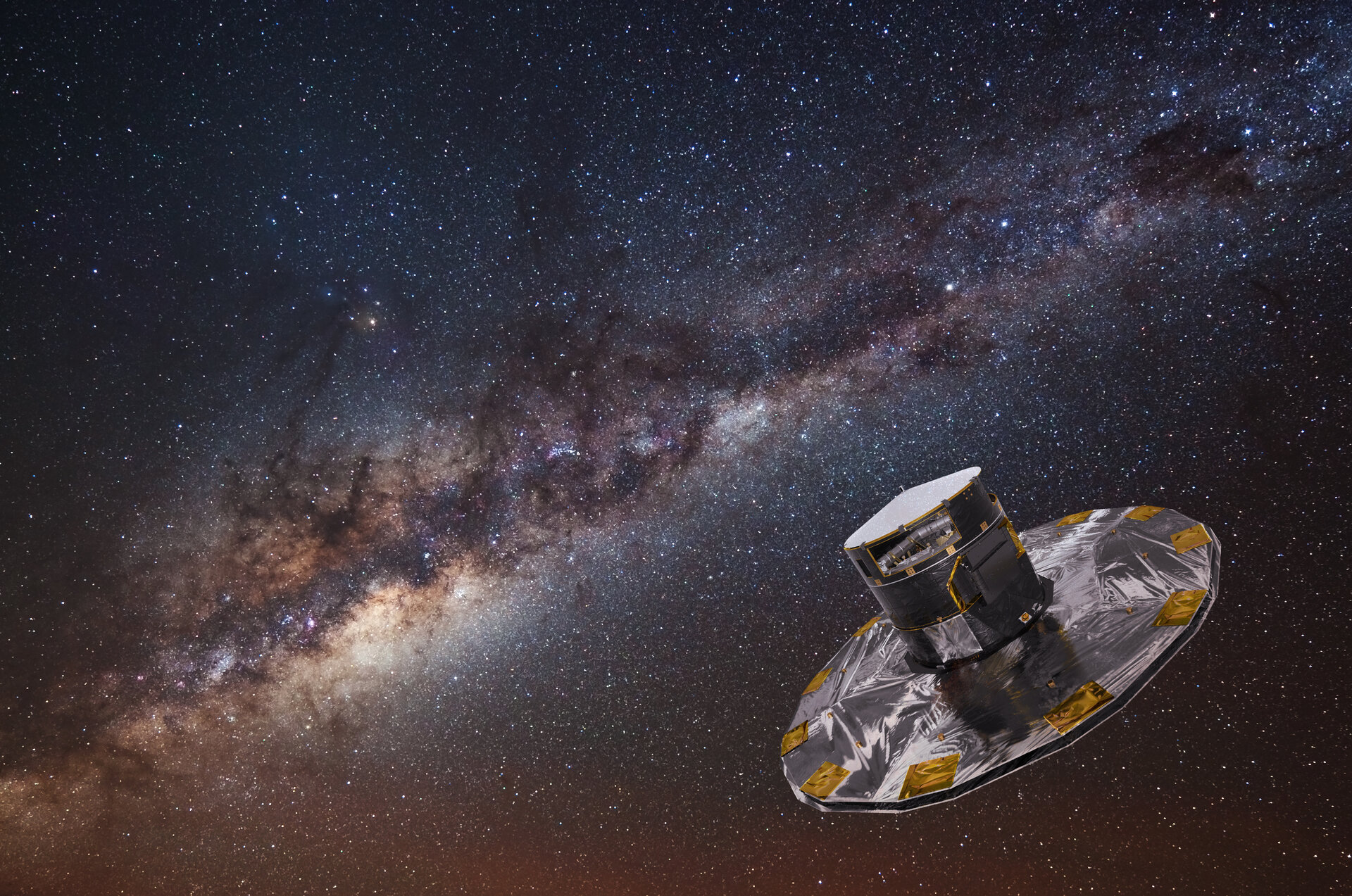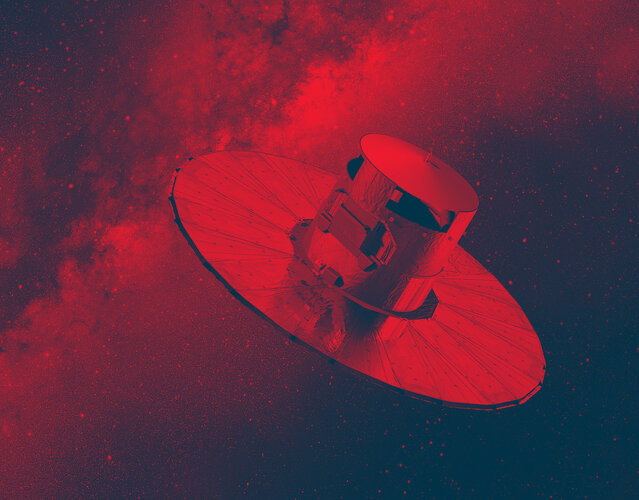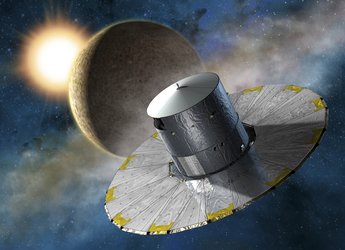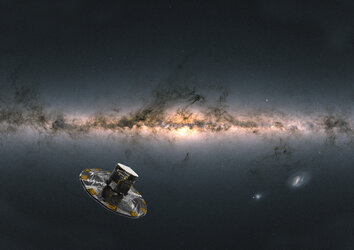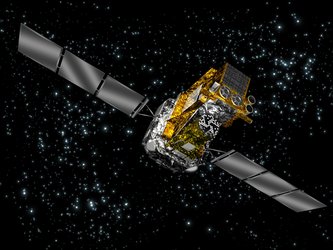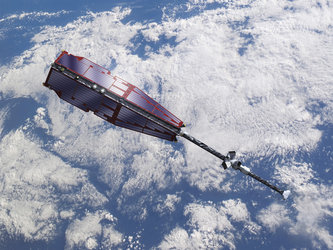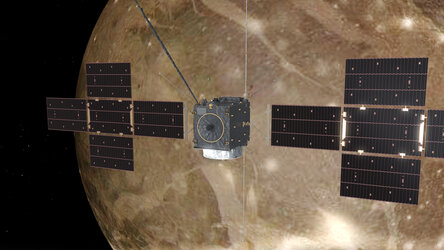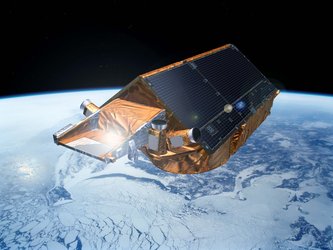Double trouble: Gaia hit by micrometeoroid and solar storm
Launched in December 2013, ESA’s Gaia spacecraft is on a mission to map the locations and motions of more than a billion stars in the Milky Way with extreme precision.
But it’s not easy being a satellite: space is a dangerous place. In recent months, hyper-velocity space dust and the strongest solar storm in 20 years have threatened Gaia’s ability to carry out the precise measurements for which it is famous.

In April, a tiny particle smaller than a grain of sand struck Gaia at high speed. Known as a micrometeoroid, millions of these particles burn up in Earth’s atmosphere every day.
But Gaia is located 1.5 million km from Earth at the second Sun-Earth Lagrange point (L2). Out here, far from our planet’s protective atmosphere, Gaia is often struck by particles like this. Impacts are expected, and the spacecraft was designed to withstand them.
This object, however, struck Gaia at a very high speed and at just the wrong angle, damaging the spacecraft’s protective cover.
The impact created a little gap that allowed stray sunlight – around one billionth of the intensity of direct sunlight felt on Earth – to occasionally disrupt Gaia’s very sensitive sensors.
Gaia’s engineers were in the middle of dealing with this issue when they were faced with another problem.
The spacecraft’s ‘billion-pixel camera’ relies on a series of 106 charge coupled devices (CCDs) – sensors that convert light into electrical signals.
In May, the electronics controlling one of these CCDs failed – Gaia’s first CCD issue in more than 10 years in space. Each sensor has a different role, and the affected sensor was vital for Gaia’s ability to confirm the detection of stars. Without this sensor to validate its observations, Gaia began to register thousands of false detections.

The root cause for the electronics failure is not entirely clear. Gaia was designed to spend up to six years in space but has now survived almost twice as long under harsh conditions.
Around the time of failure, Gaia was hit by the same violent burst of energetic particles from the Sun that triggered spectacular auroral lightshows around the world.
The spacecraft was built to withstand radiation, but during the current period of high solar activity, it is being pushed to its limits.
It is possible that the storm was the final straw for this piece of the spacecraft’s aging hardware.
The Gaia teams at ESA’s ESOC operations centre, ESTEC technology centre and ESAC astronomy centre, together with experts from the spacecraft’s manufacturer, Airbus Defence and Space, and the payload experts of the Data Processing and Analysis Consortium, have worked together closely over the past few months to investigate, analyse and, ultimately, solve these problems.

“Gaia typically sends over 25 gigabytes of data to Earth every day, but this amount would be much, much higher if the spacecraft’s onboard software didn’t eliminate false star detections first."
"Both recent incidents disrupted this process. As a result, the spacecraft began generating a huge number of false detections that overwhelmed our systems,” explains Edmund Serpell, Gaia spacecraft operations engineer at ESOC.
“We cannot physically repair the spacecraft from 1.5 million km away. However, by carefully modifying the threshold at which Gaia’s software identifies a faint point of light as a star, we have been able to dramatically reduce the number of false detections generated by both the straylight and CCD issues.”
Thanks to the hard work and efficient collaboration of all the teams involved, Gaia was recently returned to routine operations.
In fact, the engineers took the opportunity of this unscheduled disturbance to refocus the optics of Gaia’s twin telescopes for the final time. As a result, Gaia is now producing some of the best quality data that it ever has.















 Germany
Germany
 Austria
Austria
 Belgium
Belgium
 Denmark
Denmark
 Spain
Spain
 Estonia
Estonia
 Finland
Finland
 France
France
 Greece
Greece
 Hungary
Hungary
 Ireland
Ireland
 Italy
Italy
 Luxembourg
Luxembourg
 Norway
Norway
 The Netherlands
The Netherlands
 Poland
Poland
 Portugal
Portugal
 Czechia
Czechia
 Romania
Romania
 United Kingdom
United Kingdom
 Slovenia
Slovenia
 Sweden
Sweden
 Switzerland
Switzerland

























